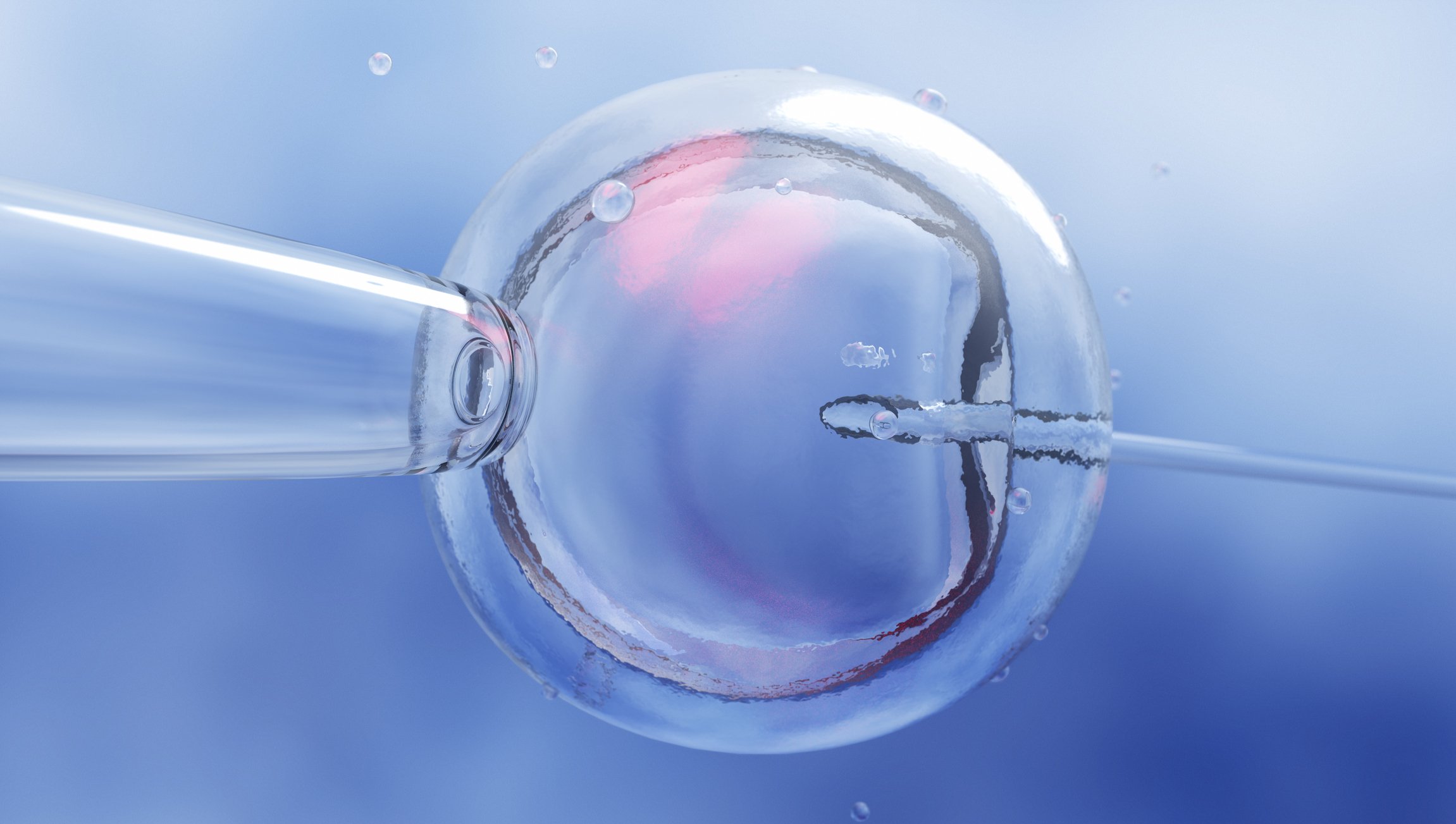
In Vitro Fertilization (IVF)
IVF Process
IVF involves the following steps:
Pre-Cycle Testing
Ovarian Stimulation
Retrieval of Eggs
Sperm Collection
Fertilization and Embryo Culture
Embryo Selection and Transfer
Pre-Cycle Testing
Before IVF begins, you will need to undergo a screening phase. Your healthcare providers may assess ovary and sperm health, examine your uterus, discuss the number of embryos to transfer, review genetic testing options and review donor options.
Evaluate hormone levels
Evaluate the uterus
Evaluate the ovarian reserve
Evaluate both partners for sexually transmitted infections
Evaluate the semen of the male partner
Ovarian Stimulation
Women take injectable and oral fertility medications to stimulate the ovaries for 7 to 14 days. Stimulating the ovaries helps multiple eggs to mature, which increases the chances of achieving a pregnancy though IVF.
During stimulation the patient will visit the IVF center for brief monitoring visits. At each visit an ultrasound exam is performed to monitor the number, size, and rate of follicle growth. With the help of blood tests, a woman’s hormonal response to the medication is also measured.
When the follicles have grown sufficiently, the trigger shot is given, this can be human chorionic gonadotropin, Lupron®, and/or Ovidrel®. This injection is given to induce the final egg maturation and triggers ovulation at a specific time.
Retrieval of Eggs
This retrieval process includes a surgical procedure where you are given a mild sedative (twilight anesthesia) through an IV. Once you are sedated, the physicians will conduct a vaginal ultrasound. A thin needle will be inserted into the ovary through the vaginal wall. The needle will enter each ovarian follicle and with mild suction, the fluid and the egg, that comes with it, will be withdrawn and handed off to the embryologist.
Sperm Collection
Ejaculated semen collected through masturbation is washed and processed to isolate the most viable sperm cells.
If there is no sperm or very poor-quality sperm in the ejaculate, the urologist can surgically retrieve sperm from the testicle(s) by an aspiration or extraction procedure, such as TESE or PESA. Donor sperm can be used for backup in case no sperm is obtained from the testicles.
Fertilization and Embryo Culture
In Vitro Fertilization can be accomplished by one of two methods. The first method is called conventional fertilization, it involves placing thousands of sperm cells with each egg in a culture dish and allowing fertilization to happen on its own. The second method involves one normal appearing sperm cell being selected by the embryologist and injected with a tiny needle directly into an egg in a technique known as Intracytoplasmic Sperm Injection (ICSI). The main indications for ICSI include: abnormal semen parameters, history of fertilization failure in a prior IVF cycle, cryopreserved oocytes, and for some cases of preimplantation genetic testing (PGT)
The eggs are checked the next day to see how many of them are normally fertilized. These normally fertilized eggs are kept in culture to develop into embryos for two to three days (cleavage stage embryos) or five to six days (blastocyst stage embryos).
Embryo Selection and Transfer
Embryos with the highest pregnancy potential are selected by their microscopic appearance and rate of development. The embryo transfer procedure can be performed using either cleavage or blastocyst stage embryos. The embryos can be either fresh or thawed after previously being frozen.
Your physician may advise Preimplantation Genetic Testing (PGT) on embryos. Embryos undergo a biopsy to remove cells for genetic testing. Typically, a few cells are removed from the trophectoderm of blastocyst stage embryos using a laser. The DNA of cells removed from each embryo is analyzed by a specialized genetics laboratory. Common reasons for PGT are to detect a specific gene mutation, to determine the sex of the embryo, and to screen for embryonic aneuploidy (PGT-A).
While PGT-A can help to identify euploid embryos which are most likely to result in a viable pregnancy, it remains an area of controversy in the field of reproductive medicine since the technology is still rapidly evolving and there is no uniform agreement about which patients are most likely to benefit. Our current opinion is that PGT-A may be beneficial for women older than age 37 who are able to produce many embryos during IVF, as well as, for women who have had prior pregnancies affected by aneuploidy. When considering PGT it is important that patients have access to counseling by a physician and a genetic counselor.
Assisted zona hatching may be performed on embryos prior to transfer, during this procedure a small hole is made in the shell that surrounds the embryo called the zona pellucida, this can help the embryo to hatch out later. The main indications for assisted zona hatching include: female age above 37, abnormally thick zona, previously cryopreserved egg or embryo, and history of implantation failure in prior IVF cycles.
Once the best embryo(s) has been selected it can be transferred under ultrasound guidance. A soft catheter is passed through the cervix into the uterus. Near the tip of the catheter a small drop of fluid containing the embryo(s) is loaded. The physician will then place the embryo(s) in the optimal position in the uterus.
Surplus embryos can be frozen and stored for future pregnancy attempts.
After the Transfer
Once the embryo is transferred, the patient is advised to limit her activities for several days. The patient is guided about the “do’s and don’ts” during this time. In case a fresh embryo is transferred, the ovaries may still be enlarged, and additional limitations may be recommended to minimize risks of ovarian hyperstimulation syndrome and other complications.
One cycle of In Vitro Fertilization is usually two to three weeks from the time of initiating injectable medications to the time of egg retrieval. In some patients more than one cycle is advised to obtain enough eggs and embryos to maximize pregnancy chances.
The decision of whether to proceed with a fresh embryo transfer or to cryopreserve all embryos and have a subsequent frozen embryo transfer is individualized. Pregnancy rates and risk of ovarian hyperstimulation syndrome, as well as implications for fetal development, placental implantation, and infant outcomes, should be weighed in this decision.
IVF by the Numbers
12 Million + is the number of babies born across the world through In Vitro Fertilization
12 % of reproductive-age women experience impaired fertility
2 % of all the infants born in the United States of America, every year are conceived by IVF
West Coast Fertility Centers offers the most advanced infertility treatment services while providing quality patient care. Our full range of fertility treatments ranges from basic to advanced treatments, including intrauterine insemination (IUI), In Vitro Fertilization (IVF), Third-Party Reproduction, Egg Freezing, Fertility Preservation, etc.
Disclaimer: This website is for informational purposes only and should not replace professional medical advice. If you have concerns about your fertility, consult a healthcare provider.










